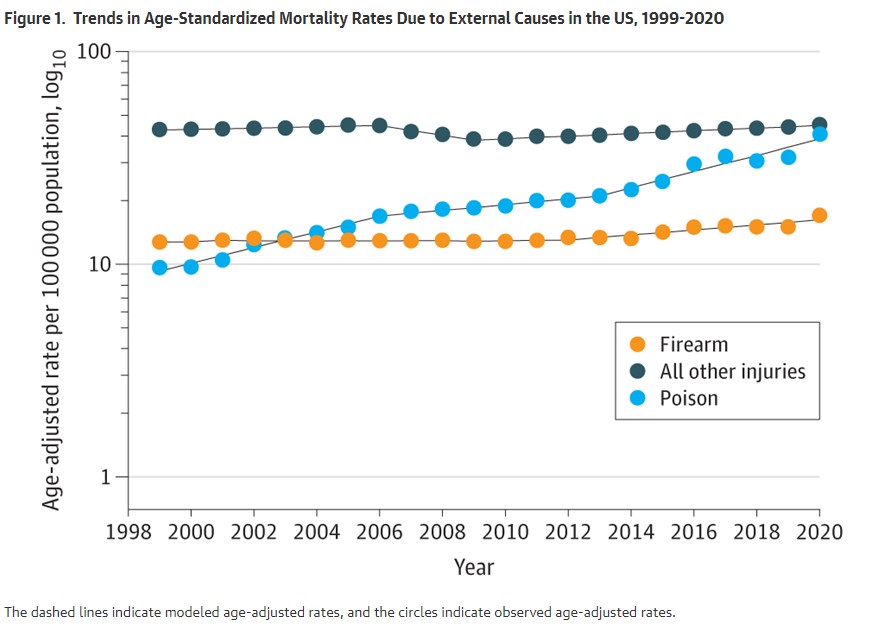The demography analysis of 3,813,894 deaths collated by the National Center for Health Statistics due to non-natural causes was simplistic - age, sex, race, ethnicity, and belief about intent, then separating out criminal acts for things like gun deaths and if there was no clear intent of suicide, listing drug overdoses as accidental, while parsing motor vehicle injuries and falls as well.
Overdoses increased in all the racial and ethnic groups examined; the most rapid increase was among American Indian and Alaska Native individuals, most were officially listed as accidental. Firearm death rates also increased, primarily among younger adults, with criminals acts following that trend, which caused other segments to appear larger also. The drug overdoses over time are in contrast to recent trends, which show more White individuals.

Over 91 percent of the 'poisoning' cases were drug overdose while other injuries was 30 percent car accidents and 28 percent falls.Gun fatalities are negligible compared to those while non-suicide gun deaths are a fraction of gun deaths overall, despite high-profile media coverage.
The most concerning find was drug overdoses, which increased 7 percent from 2013 on - which corresponds to government demands for abuse-resistant oxycontin and a migration to medical fentanyl use outside health care channels and recreational fentanyl use as well. The instances classified as suicides rose 2 percent each year so the rest were lumped in as accidental overdose.
Firearm death rates only increased 1.1 percent, about the same for both men and women. Black persons had the highest rates of firearm deaths throughout the study period - 5 times higher than those of Asian and Pacific Islander persons. The firearms death rate change was the same as for cars.
The good news there is that unintentional firearm death rates decreased by 3.7% per year from 1999 to 2020. People being shot were doing it themselves or as part of a criminal act, so gun safety awareness campaigns have worked.
Deaths due to falls increased by 3.6% on average annually from 1999 to 2020, which will be expected to climb as people continue to live longer.






Comments